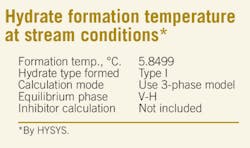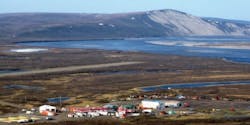The need to continue developing offshore oil and gas resources has kept strength in demand for offshore pipelay and construction vessels. New vessels dedicated for work offshore India, offshore West Africa, in the Asia Pacific, Arctic, and North Sea are all either under development, being built, or have recently been launched.
The economic slowdown has led to delays in some of these vessels. But all are still likely to eventually be built.
Smaller vessels
Leighton International Offshore Oil and Gas launched a new pipelay and offshore construction vessel in Batam, Indonesia, October 2009. The Leighton Eclipse will initially deploy to India for work on Oil and Natural Gas Corp.'s $750 million Pipeline Replacement Project (PRP II) in the Mumbai High oil field about 180 km off the coast of Mumbai.
Leighton's commitments under PRP II include installing around 60 km of 6-16 in. pipeline in water depths of 70-80 m during the 2009-10 weather window (ending April 2010) and a further 60 km the following season. Leighton built Eclipse—which conforms to ABS class, mobile offshore drilling unit requirements, and is special purpose shipping code compliant—to meet PRP II's timeframe.
Eclipse measures 130 m long, 32 m wide, and has a hull depth of 8.5 m. The vessel can handle pipe diameters between 6-in. and 60-in. OD, and has two 60-tonne pipe tensioners. Eclipse is fitted with a 300-tonne pedestal crane and can work in water depths of up to 150 m. Eclipse includes facilities for manual, semiautomatic, and fully automatic welding. The vessel uses electric mooring winches, with fully integrated bridge mounted controls.
Leighton now has two pipelay barges operating between South East Asia, India, and the Middle East. Its flagship pipelay barge, Leighton Stealth, built in 2006, recently completed an extensive upgrade, including a new 232-person accommodation block.
A second vessel likely destined for work offshore India appears to be running behind schedule. Larsen & Toubro and SapuraCrest Petroleum Bhd ordered the S2500 combination heavy-lift pipelay vessel in May 2007 to enter service this year. S2500 features a more shipshape bow than the S3000 design it was adapted from, allowing a transit speed of up to 10 knots.
Sea of Solutions designed the vessel, to be built by ASL Marine, with a 10-point mooring system upgradable to dynamic positioning. The 160-m vessel features a 3,000 ton AmClyde heavy lift main crane.
In April 2009 Abu Dhabi-based National Petroleum Construction Co. awarded Sea of Solutions the basic design contract for new-build large derrick pipelay vessel DLS-4200. The vessel, also a modified version of the S3000, will combine double-joint S-lay operations with a 4,200-ton lift capacity. NPCC will initially operate the DLS-4200 in the Arabian Gulf and offshore India. Vessel design allows for a DP2 dynamic positioning system to eventually replace the mooring system it will initially include.
DLS-4200 features two fixed-pitch shaft driven main propellers of 5,500 kw each, allowing for a top speed of 12-13 knots. Future DP upgrade will require five 3,500-kw retractable azimuth thrusters.
Sea Trucks Group, meanwhile, is building two somewhat smaller ship-shaped pipelay crane construction vessels, Jascon 18 and 35. Jascon 18, due for delivery in mid-2010, will be able to lay pipe of 4-48 in. OD. The 150 by 36.8 m vessel features a Class III DP system, 1,800 sq m of clear deck area, a 1,600 ton heave-compensated main crane with underwater capacity of 300 ton at 3,000 m, an S-lay system below the main deck with three 200-ton tensioners and a 120 m stinger, and total thruster power of 23,300 kw. Jascon 35 uses the same design but features an 800-ton main crane, three 100 ton tensioners, and 16,700 kw of total thrust.
STG anticipates Jascon 35 entering service shortly after Jascon 18. Both had earlier been slated for second-half 2009 delivery. Either or both vessels will likely be deployed off the coast of West Africa, assisting in long-term development work off Nigeria and Angola.
Tiong Woon Oil & Gas Services completed construction of the hull, other major components, and installation of equipment in late September 2009 on a new 146.3-m derrick pipelay barge for owner-operator NorCE Offshore Pte Ltd. The barge, held in place by a mooring system, features an 1,100 tonne crane and can lay pipe up to 48-in. OD in as much as 200-m water. The vessel, launched in Bintan, Indonesia, will operate in the Asia Pacific region.
Big vessels
Allseas Group awarded Deltamarin Ltd. the detailed-design contract for platform installation-decommissioning and pipelay vessel Pieter Schelte. The contract includes naval architecture, structural engineering, accommodation and system engineering (including piping), electrical and instrumentation, and heating, ventilation, and air-conditioning. Deltamarin is scheduled to have completed the design by March 2010.
Allseas had already ordered long-lead items such power generation equipment, thrusters, and high-tensile steel as of February 2009 (allowing Deltamarin a high-level of detail in its design process) and was evaluating shipyards. Tendering will follow design completion. Original delivery plans for 2011 have slipped to 2013.
Pieter Schelte measures 382-m long and 117-m wide. The dynamically positioned vessel will have a topsides lift capacity of 48,000 tons and a jacket lift capacity of 25,000 tons. Two portal cranes at Pieter Schelte's stern will lift jackets by means of a tilting beam system, allowing tilting of the jacket into a horizontal position on the ship's deck. The vessel's pipelay tension of 2,000 tons will double Allsea's Solitaire, with the company describing Pieter Schelte as the world's largest pipelay vessel.
The ship has a top speed of 14 knots, accommodation for 577, and can lay pipe of 6-68 in. OD in a near-vertical orientation off its 175-m stinger. Pieter Schelte's welding facilities include a double joint factory with five lineup stations and two stations for combined internal and external welding. They also include a mainline with six welding stations for double joints, one non-destructive testing station, and six coating stations.
Allseas will pitch the vessel for large-diameter pipeline installations, and the company says its lift capacity will position it well for North Sea decommissioning work. Allseas says Pieter Schelte's movements in a 10-ft sea are smaller than those of a comparable semisubmersible vessel, despite its twin traditional-hull design. Allseas' initial cost estimates for the vessel were $1.7 billion.
Heerema Marine Contractors is designing its own $1-billion Class III DP deepwater construction vessel. The ship will be 220-m long and 88-m wide, with a maximum speed claimed by Heerema of up to 20 knots, roughly four-times that of its current fleet. Heerema's vessel will include facilities for 550 people, upgradable to 750, with a payload capacity of 25,000 tonnes and a dual crane capacity of 15,000 tonnes. Its J-lay tower, with 2,000-mt tension, will install pipe of up to 32-in. OD at depths of 200-3,500 m.
Heerema designed the vessel particularly for offshore construction in the Arctic, locating its cranes, J-lay tower, and other installation equipment so as to minimize the effect of the Arctic environment on operations. The vessel's hull and thrusters were also designed to withstand conditions likely to be encountered in environments such as the Barents Sea and Beaufort Sea, both of which Heerema has targeted as areas for future growth.
Heerema planned to have the vessel in service in 2010, but this schedule appears to have slipped.
More Oil & Gas JOurnal Current Issue Articles
More Oil & Gas Journal Archives Issue Articles
View Oil and Gas Articles on PennEnergy.com




